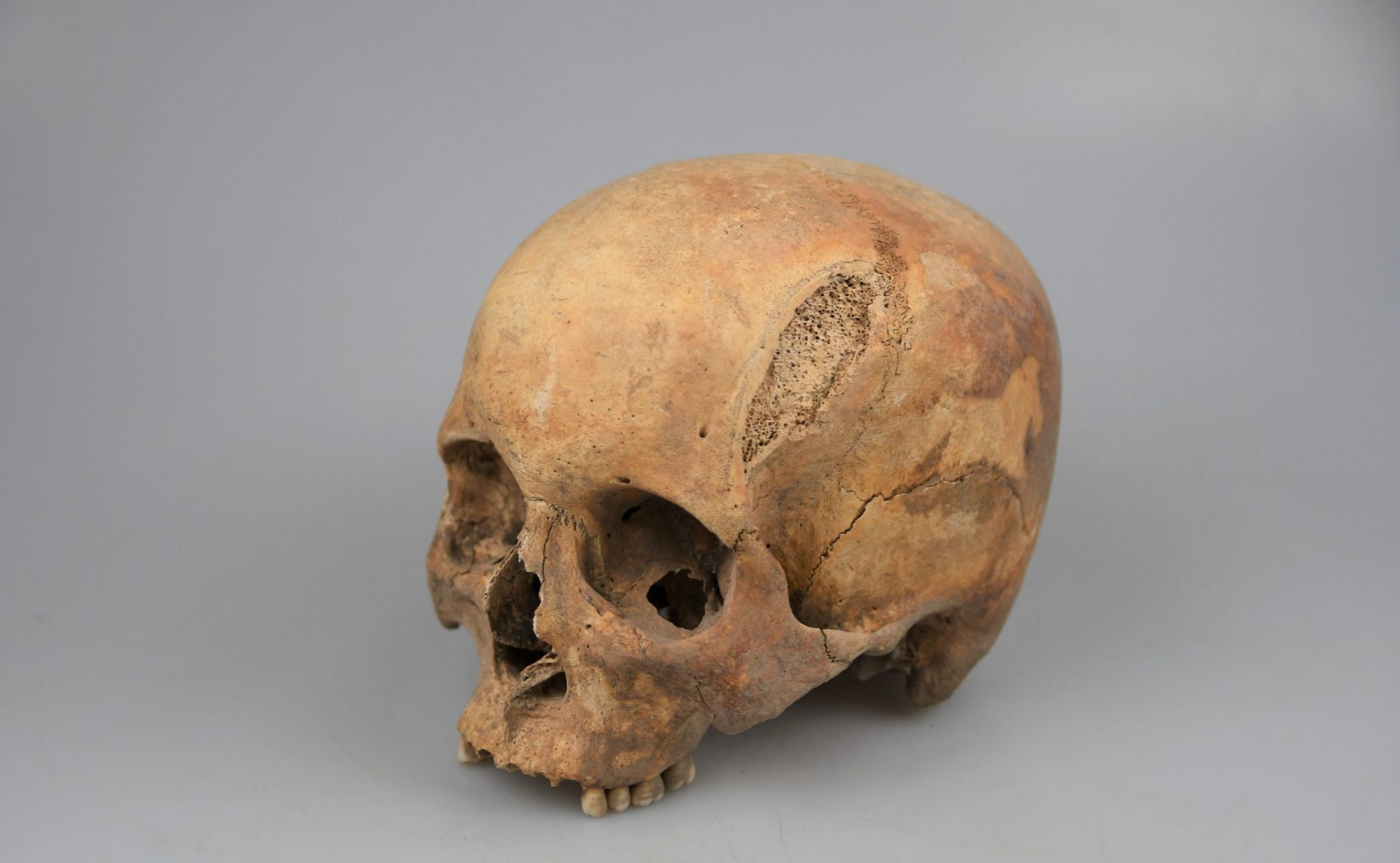The territory near the former Gėluva Calvinist Church in Raseiniai district was investigated by archaeologist Vytautas Urbanavičius in 1974-1975. In total, 360 graves dated to the 17th century were found in the former churchyard. Most of the dead were buried in coffins; also, clothing details, work tools, coins were found. The interments did not follow the particular spatial order, therefore the dead were arranged in different directions. Three graves, no. 35, 36, 108 were assigned to the V-VI c. due to the characteristic grave goods of that period, and human remains were not examined by anthropologist. In summary, the anthropological material of Gėluva is abundant, however, only small part of remains was kept to preserve. The selective manner of bone collection limits the possibilities of reliable sex and age determination of individuals, and it does not allow the material to be considered as a representative sample of the Early Modern Times.
The anthropological material of human remains of Gėluva is well preserved, but it was collected very selectively, only well-preserved skulls, long bones, pelvis and vertebrae were kept:
|
Preservation |
n |
% |
|
Complete skeleton (>50 %) |
3 |
3% |
|
Partially preserved skeleton (~50 %) |
14 |
15% |
|
Fragmentary skeleton (<50 %) |
79 |
82% |
A total of 96 skeletons are stored: 86 adults and 10 non-adult individuals (Fig. 1). At the moment, only less than a third, or 28%, of the original set is stored (N=349). Sex and age distribution of Gėluva set is based on current size of the original sample, therefore female and probable female accounted for 40.7%, while male and probable male made 59.3%. It also revealed that the majority of non-adults were between from 1 to 10 years at the time of death, no newborns were found (Fig. 2). Male adults were mostly older age individuals (over 40 years old), meanwhile female distribution in all age group was similar (Fig. 3).

Fig. 1. Population structure of the Gėluva burial ground (N=96).


